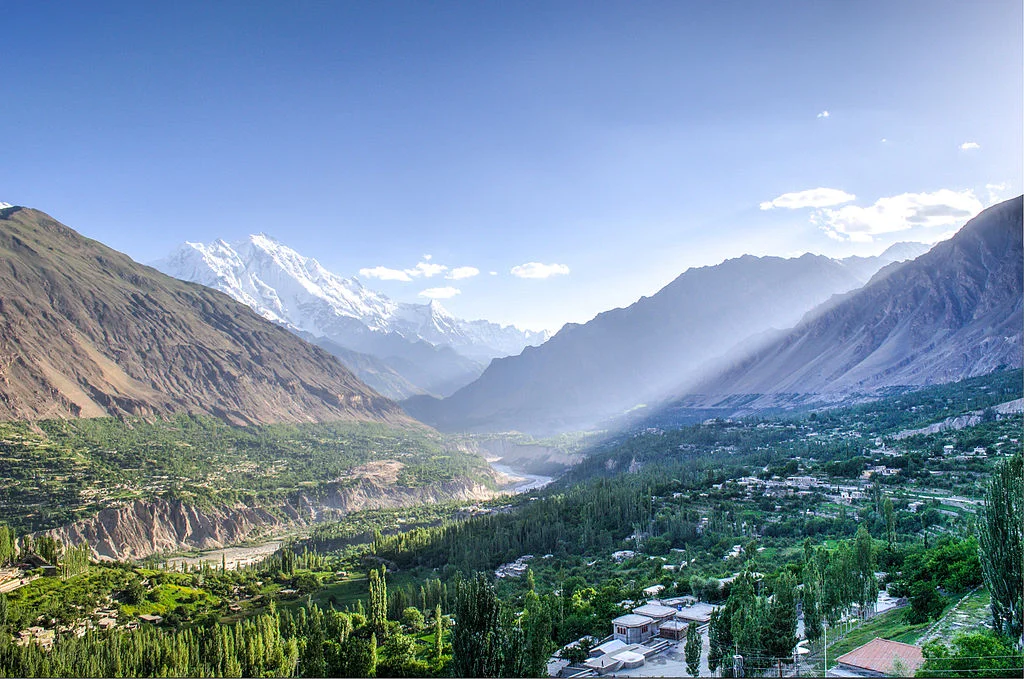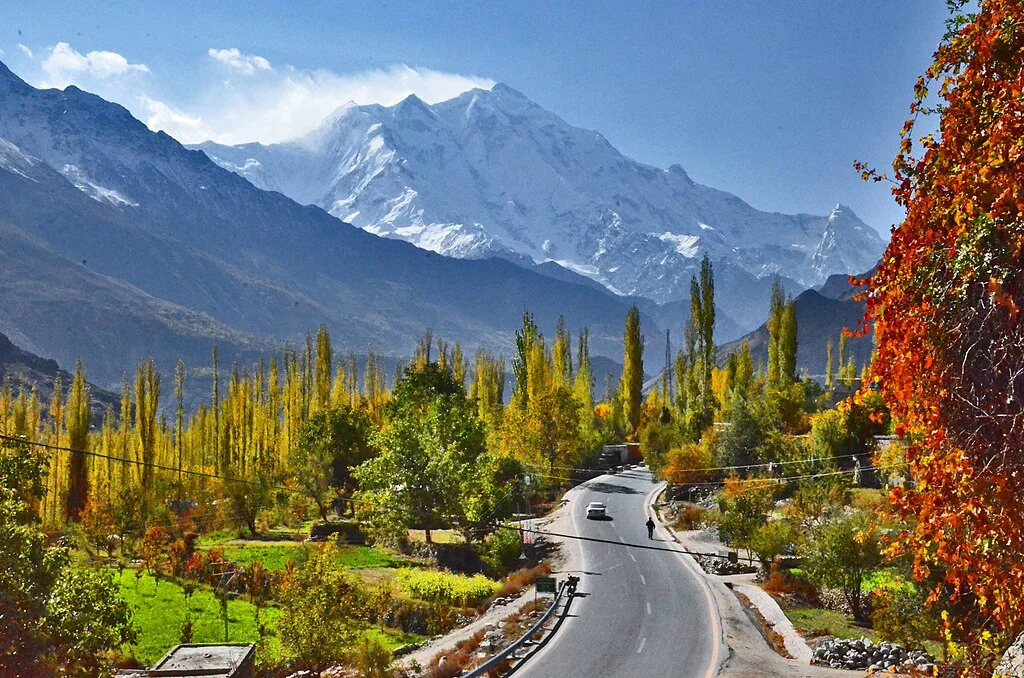Formerly a princely state, the district of Hunza covers an area of 11, 695 sq km. It is home to a wide range of cultural heritage sites including the famous Altit and Baltit Forts, historic polo grounds, watchtowers, mosques, and several archaeological sites such as the renowned Sacred Haldekish Rocks in Ganish.
Languages: Burushaski, Shina and Wakhi are local languages while English and Urdu are also widely spoken.
Overview
Hunza Valley is the prime attraction for tourists as it offers spectacular sceneries of mountains. Tourists can witness high peaks of 7000m such as Lady Finger and Ultar. Hunza has been bestowed with natural beauty rich cultural and traditional heritage such as traditional dresses, tunes, dances and cuisines.

Natural Beauty and Scenic Spots
Hunza Valley is renowned for its breathtaking natural beauty, where every corner reveals stunning landscapes and awe-inspiring scenic spots.
- Rakaposhi View Point
- Attabad Lake Hunza
- Passu Cones
- Hunza River
- Hunza Nagar

The Capital of Hunza
Karimabad, also known as Baltit, is Hunza Valley’s ancient capital. Sitting high above, atop a green hill overlooking the valley, is Karimabad. Karimabad is filled with trinket shops, hiking shops, and decent accommodation, all left over from when tourism was an actual thing here.
Culture of Hunza
Hunza Valley is renowned for its rich cultural traditions and vibrant community celebrations. Here are some highlights of its cultural scene:
- Folk Music and Instruments: Hunza’s vibrant music scene features customary instruments like
- damba (drum)
- Sitar
- Surnai (wind instrument).
- Cultural Dances: The Danadi and Alghani dances are authentic to Hunza, showcasing the region’s cultural heritage. However, Danadi is lively and performed during festive occasions, while Alghani is a graceful dance often featured in religious and seasonal festivals.
- Craftsmanship and Handicrafts: The local artisans of Hunza are skilled in creating traditional handicrafts. They are vibrant, reflecting Hunza’s rich cultural traditions, featuring crafts such as:
- Handmade textiles
- Pottery
- Jewelry
- Intricate wood carvings
- Handwoven kilims (rugs)
- shawls
Traditional Festivals of Hunza:
- Navroz: Also known as the Persian New Year, Navroz is celebrated with vibrant festivities marking the beginning of spring. It involves traditional music, dance, and communal feasts.
- Eid-ul-Fitr: This festival marks the end of Ramadan and is celebrated with special prayers, feasts, and family gatherings. The people of Hunza prepare traditional dishes and sweets for this occasion.
- Independence Day: On August 14th, Pakistan’s Independence Day is celebrated with patriotic fervor. In Hunza, the occasion is marked by flag-hoisting ceremonies, cultural performances, and community events.
- Chilim Jusht: Also known as the “Festival of the Spring,” this festival is celebrated by the local Ismaili community with prayers, cultural dances, and community gatherings.
Traditional Food of Hunza
Traditional food in Hunza reflects the region’s unique culture and natural resources. Some of the notable dishes include:
- Chapshuro: A local meat-filled pastry, similar to a savory pie, often made with minced meat, onions, and spices, encased in a thin dough.
- Pulao: A rice dish cooked with meat, vegetables, and a blend of aromatic spices, providing a hearty and flavorful meal.
- Hunza Bread: A type of unleavened bread, usually enjoyed with tea or as a side to main dishes.
- Grapes and Apricots: Hunza is renowned for its fresh and dried fruits, particularly apricots and grapes, which are often used in various local dishes and snacks.
- Kahwa: A traditional green tea flavored with cardamom, often served with almonds and sometimes sweetened with honey.
